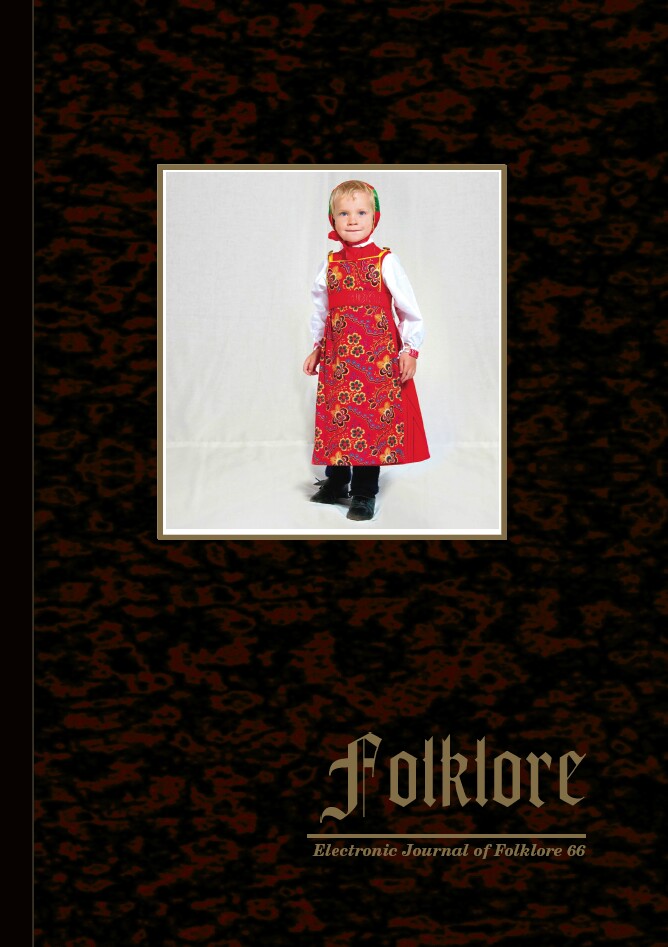Nekrasov Cossacks’ Festive Clothes: Historical Changes and Modern Functions
Nekrasov Cossacks’ Festive Clothes: Historical Changes and Modern Functions
Author(s): Nina VlaskinaSubject(s): Customs / Folklore, Cultural Anthropology / Ethnology, Culture and social structure
Published by: Eesti Kirjandusmuuseum
Keywords: cultural dynamics; heritage; identity; Nekrasov Cossacks; Old Believers; traditional costume;
Summary/Abstract: The Nekrasov Cossacks (or Nekrasovites) are an ethno-religious group remarkable for preserving their ancestors’ heritage, especially the traditional costume, cuisine, and songs. Led by their ataman Ignat Nekrasov, in the 18th century, a group of the Cossack Old Believers left Russia to escape from religious and political persecution. For 250 years, they lived outside of their historical homeland and maintained limited contact with other ethnic groups. They returned to Russia in the 20th century. This paper will study the transformation of Nekrasov Cossacks’ costumes through the last two centuries, analyzing the contemporary use of the Cossack national costume on festive occasions, and interpreting the role of the Cossack national costume in heritage preservation processes. I will analyze the data derived from ethnographic and dialectological studies as well as my own ethno-linguistic field research in the Krasnodar and Stavropol krays (regions) in Russia. The paper will focus on a depiction of the typical Nekrasov Cossack costume and the functional hierarchy of its elements; the declared immutability of the traditional costume vs. its actual transformations and reasons for those transformations; the modern functions of the Nekrasovites’ costume as a symbol of identity for the members of the group, as well as a mass media stereotype.
Journal: Folklore: Electronic Journal of Folklore
- Issue Year: 2016
- Issue No: 66
- Page Range: 133-154
- Page Count: 22
- Language: English

